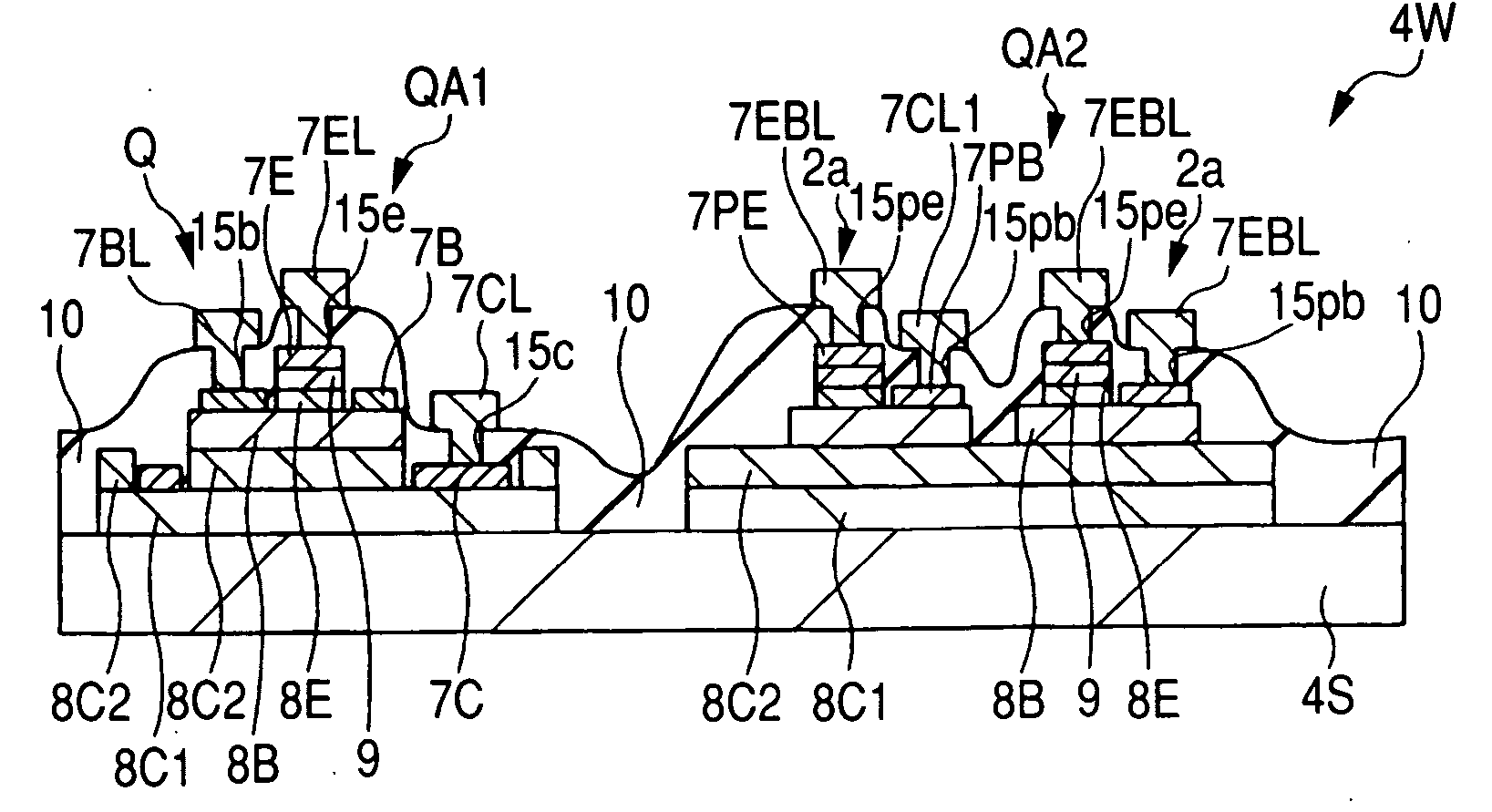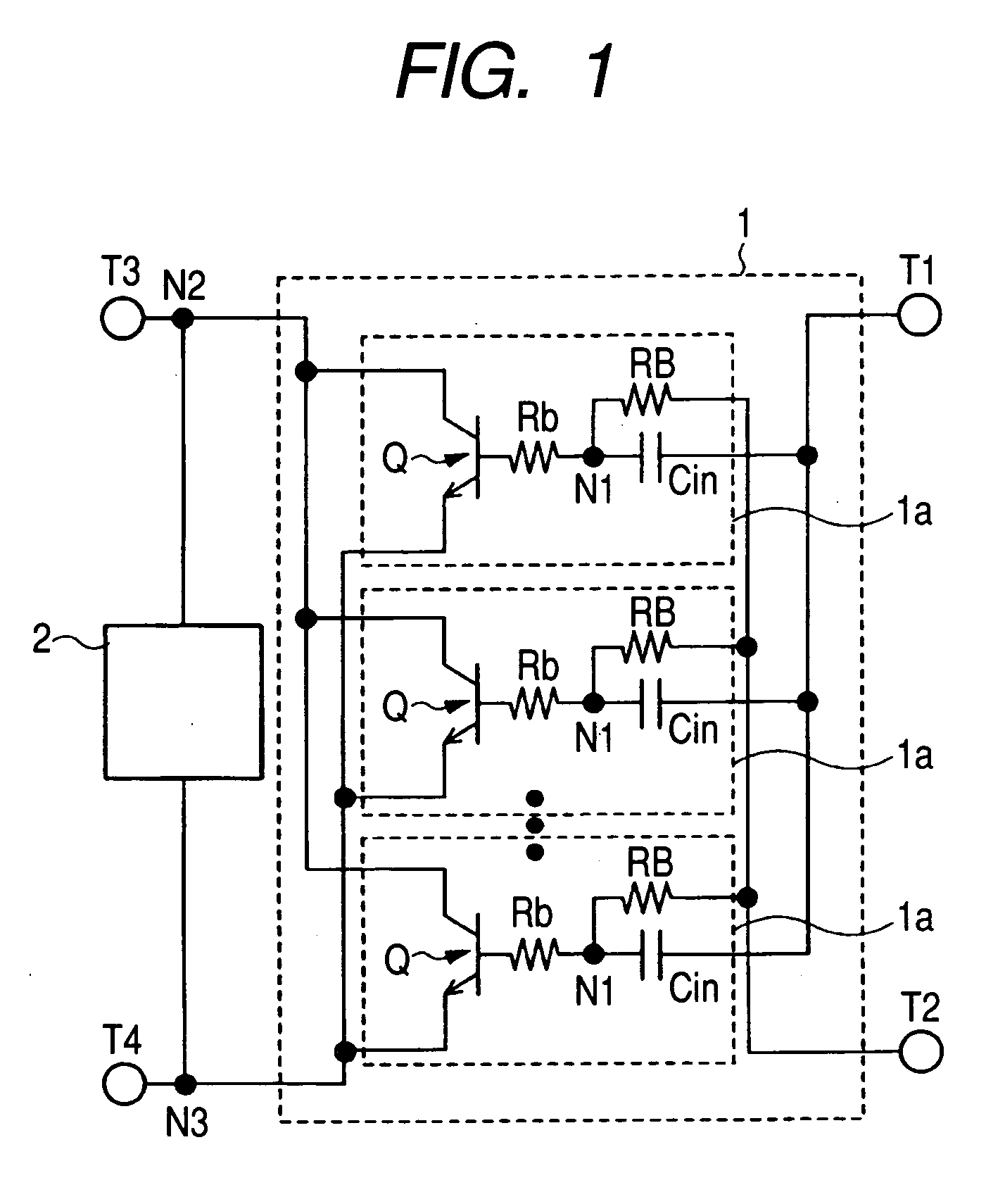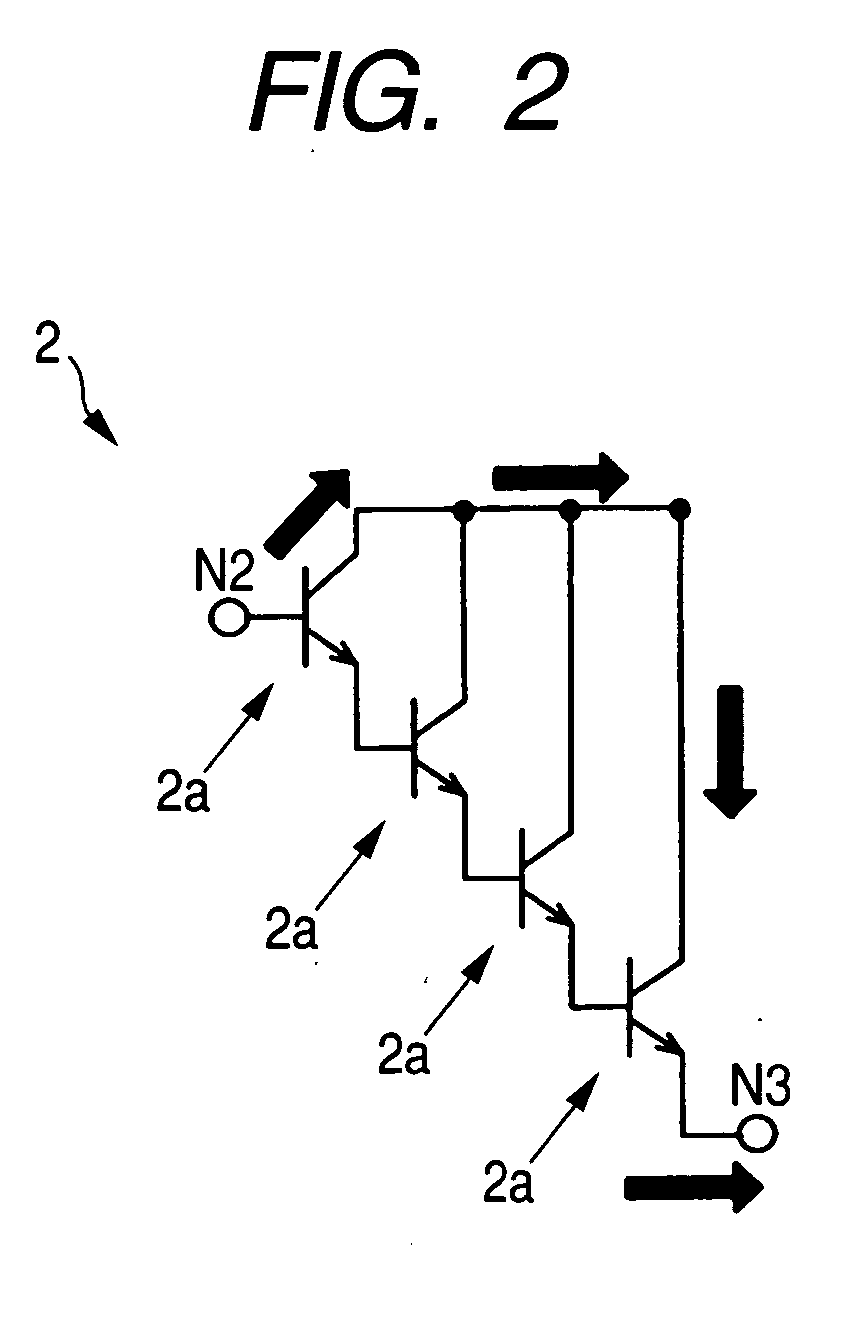Semiconductor device and radio communication device
a technology of semiconductor devices and radio communication devices, applied in the direction of solid-state devices, transistors, basic electric elements, etc., can solve the problem of inability to prevent current localization, and achieve the effect of reducing the thermal resistance of semiconductor devices
- Summary
- Abstract
- Description
- Claims
- Application Information
AI Technical Summary
Benefits of technology
Problems solved by technology
Method used
Image
Examples
embodiment 1
[0058] A semiconductor device shown in Embodiment 1 will be described with reference to FIGS. 1 to 13. The description will be given first to an amplifier circuit and a protective circuit in the semiconductor device shown in the present embodiment with reference to FIGS. 1 and 2, in which FIG. 1 is a circuit diagram of an amplifier circuit 1 and a protective circuit 2 in the semiconductor device shown in the present embodiment and FIG. 2 is a circuit diagram of the protective circuit 2 shown in FIG. 1.
[0059] As shown in FIG. 1, the amplifier circuit is constituted by a plurality of unit cells 1a connected in parallel. Each of the unit cells 1a is composed of a unit transistor Q which is, e.g., a hetero-junction bipolar transistor (hereinafter referred to as the HBT) and additional elements which are a base ballast resistor PB, a base resistor Rb, and a capacitor Cin.
[0060] The plurality of unit transistors Q have respective collectors coupled to each other, respective emitters cou...
embodiment 2
[0090] A semiconductor device shown in Embodiment 2 will be described with reference to FIGS. 14 and 15. In contrast to Embodiment 1 which has described the case where the HBT is used, the present embodiment will describe the case where a MOS (Metal Oxide Semiconductor) transistor is used.
[0091]FIG. 14 is a principal-portion schematic plan view of the semiconductor device shown in the present embodiment. FIG. 15 is a principal-portion schematic plan view of the semiconductor device taken along the line D2-D2 of FIG. 14.
[0092] As shown in FIG. 14, MOS transistors Qa and Qb, the pads BP, and wiring patterns 16 providing electrical connection therebetween have been laid out in the formation region 3 of the substrate 4S. The formation region 3 is provided with a plurality of transistor formation regions 3a and 3f having the MOS transistors Qa and a plurality of transistor formation regions 3b, 3c, 3d, and 3e having the MOS transistors Qb, which are arranged in the y-direction.
[0093] ...
embodiment 3
[0097] A semiconductor device shown in Embodiment 3 will be described with reference to FIGS. 16 to 24. The description will be given first to the amplifier circuit of the semiconductor device shown in the present embodiment with reference to FIG. 16. FIG. 16 is a circuit diagram of the amplifier circuit 1 shown in the present embodiment.
[0098] As shown in FIG. 16, the amplifier circuit 1 is composed of the plurality of unit transistors Q connected in parallel. The plurality of unit transistors Q have the respective collectors coupled to each other, the respective emitters coupled to each other, and the respective bases coupled to each other. As a result, the amplifier circuit is constituted to operate as though it is a single transistor with the common RF signal inputted to the input-side bases from the terminal T1. On the output side of the amplifier circuit 1, the unit transistors Q have the respective collectors connected commonly to the terminal T3 and the respective emitters ...
PUM
 Login to View More
Login to View More Abstract
Description
Claims
Application Information
 Login to View More
Login to View More - R&D
- Intellectual Property
- Life Sciences
- Materials
- Tech Scout
- Unparalleled Data Quality
- Higher Quality Content
- 60% Fewer Hallucinations
Browse by: Latest US Patents, China's latest patents, Technical Efficacy Thesaurus, Application Domain, Technology Topic, Popular Technical Reports.
© 2025 PatSnap. All rights reserved.Legal|Privacy policy|Modern Slavery Act Transparency Statement|Sitemap|About US| Contact US: help@patsnap.com



